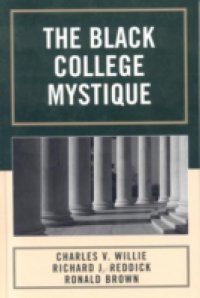This study compares the culture of black colleges and universities a generation ago with those that exist today, and makes projections into the future, based on a comprehensive review of professional literature and an analysis of the management skills of contemporary black college leaders. The book considers the assets and liabilities of historically Black colleges and discusses the ways in which Black colleges can be of help to non-Blacks (including white students) who can benefit from the unique kind of education offered by such schools. The mission of historically black colleges and universities (HBCUs) a generation ago focused on opening doors closed to students because of their scores on standardized aptitude tests, providing remedial and supportive services to students whose academic backgrounds reflect low levels of achievement, combining academic as well as vocational course concentrations, modifying instructional methods and techniques to meet students where they are, and take them to the higher levels they are capable of attaining. This mission of opening new opportunities, giving support to overcome deficits of the past, and preparing students for professional and academic vocations continues today for these institutions.

